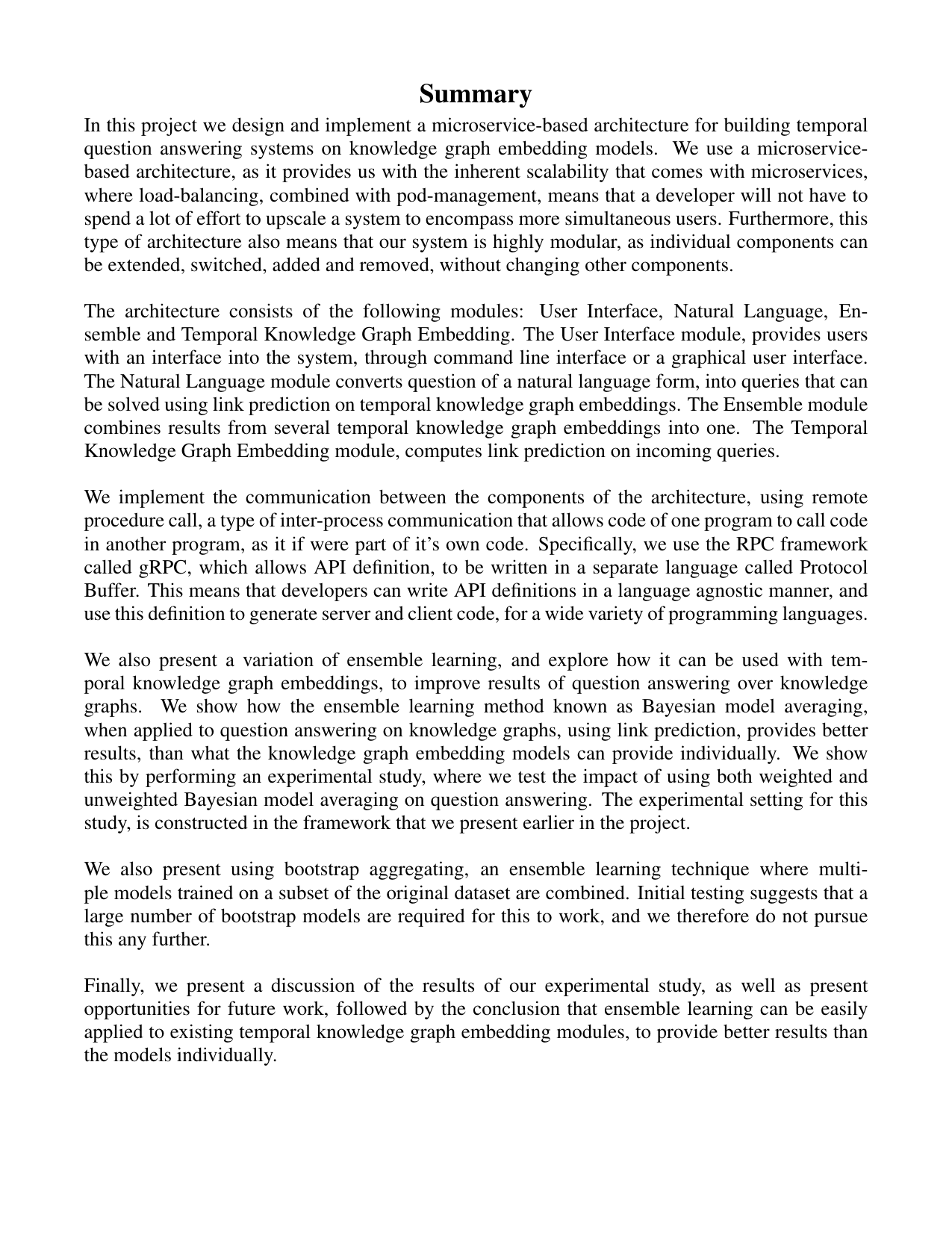
MATQA: Microservice-based Architecture for Temporal Question Answering on Knowledge Graph Embeddings
Authors
Term
4. term
Education
Publication year
2022
Submitted on
2022-06-16
Pages
11
Abstract
Question answering over knowledge graphs (QA- KGs) is a vital topic within information retrieval. Questions with temporal intent are a special case of questions for question answering (QA) systems that has not received a large amount of attention in research. In this paper we propose using temporal knowledge graph embeddings (TKGEs) for tempo- ral QA. We propose MATQA, a microservice-based architecture for building temporal QA systems on knowledge graph embeddings (KGEs). Further- more, we present a variation of ensemble learning, Bayesian model averaging (BMA), where results of several link prediction tasks on separate differ- ent pre-trained TKGE models are combined and re-ranked, before being chosen as the final results. Our experiments on two datasets, ICEWS14 and ICEWS05-15, performed using this variation of en- semble, which we build using the microservice- based architecture, show that it provides better re- sults, than using these TKGE models individually.
Question answering over knowledge graphs (QA- KGs) is a vital topic within information retrieval. Questions with temporal intent are a special case of questions for question answering (QA) systems that has not received a large amount of attention in research. In this paper we propose using temporal knowledge graph embeddings (TKGEs) for tempo- ral QA. We propose MATQA, a microservice-based architecture for building temporal QA systems on knowledge graph embeddings (KGEs). Further- more, we present a variation of ensemble learning, Bayesian model averaging (BMA), where results of several link prediction tasks on separate differ- ent pre-trained TKGE models are combined and re-ranked, before being chosen as the final results. Our experiments on two datasets, ICEWS14 and ICEWS05-15, performed using this variation of en- semble, which we build using the microservice- based architecture, show that it provides better re- sults, than using these TKGE models individually.
Keywords
Documents
